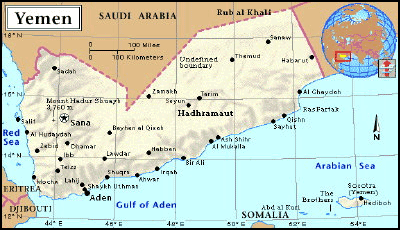Yemen Mocha “Rimy”

“Smooth and Delicious” Legend
Long ago and far away, coffee seedlings were taken by boat from their native Abysinian highlands (today’s Ethiopia), across the Red Sea and planted in the high arid mountains of the southern Arabian peninsula, in what is now Yemen.
For centuries, Arab and then Ottoman traders enjoyed a monopoly on this magically invigorating plant, and to protect it they enforced a strict ban on export of viable seeds of the mother plant. Not until 1690 were plants successfully smuggled to Ceylon and from there to Java, allowing the Dutch East Indies Company to join in competition for the worlds burgeoning coffee thirst. Today more than 85 countries grow it, and coffee is the world’s number one export commodity by dollar value. Still, some legends linger: the botanical name Coffea Arabica is owed to this passage through Yemen, which was formerly just a mountainous corner of a vast exotic land known to us simply as “Arabia”.
 Despite the long head-start, coffee in Yemen is still produced largely by the ancient methods, on terraces along steep slopes from 3,000 to 7,000 feet above sea level. The terraces are not to protect from erosion, which is unlikely because of the dry climate, but rather to collect the rare rainfalls. Irrigation during the growing season is an absolute necessity.Cultural practices followed are minimal: Fertilizers are organic or ash; pruning is seldom done. The berries are allowed to ripen on the tree and stripped once a year, all at once. They are naturally sun-dried on mud grounds, which accounts for the frequent presence of small stones (removed in our roasting process). Unwashed, the dried cherries are still often hulled by crushing between two millstones, causing many broken seeds.
Despite the long head-start, coffee in Yemen is still produced largely by the ancient methods, on terraces along steep slopes from 3,000 to 7,000 feet above sea level. The terraces are not to protect from erosion, which is unlikely because of the dry climate, but rather to collect the rare rainfalls. Irrigation during the growing season is an absolute necessity.Cultural practices followed are minimal: Fertilizers are organic or ash; pruning is seldom done. The berries are allowed to ripen on the tree and stripped once a year, all at once. They are naturally sun-dried on mud grounds, which accounts for the frequent presence of small stones (removed in our roasting process). Unwashed, the dried cherries are still often hulled by crushing between two millstones, causing many broken seeds.
“In general, Arabian or Mocha, beans are very small, hard, round, irregular in form and size; in color, olive green shading off to pale yellow. The roast is poor and irregular. In the cup they have a unique acid character, heavy body; in flavor, smooth and delicious.” –William H. Ukers, All About Coffee (1935)
Once the source of all the world’s commercial coffee, due to political instability and civil war Yemen exports only 42,000 bags of coffee per year (down from 127,000 in 1957), which ranks it 44th among growing nations. The main buyers are Saudi Arabia and Japan. Nearly one quarter of Yemen’s 8 million people depend on the income from it’s 300,000 small coffee farms. As it’s only export product, coffee is Yemen’s only source of foreign exchange. This month’s selection was produced in the “Djebel Remi” region.
The flavor of Yemen Mocha is described in the most glowing terms: pungent, robust, and fragrant. I believe it is precisely the natural development of Yemen coffee, the intensifying aridity of it’s culture, which accounts for its concentrated, wine-like flavors and brilliant acidity. We give it a gentle “cinnamon” roast, to preserve all of the natural identity. The intensely bright flavor, floral fruitiness, and smooth balance make this a cup to enjoy on cool mornings and Fall evenings.
Right now, as I’m savoring a cup, I’m tempted to declare it my favorite coffee, the one I’d choose to have if deserted on a Pacific island if I could have only one. But, who am I kidding….live without Balthazar’s?


